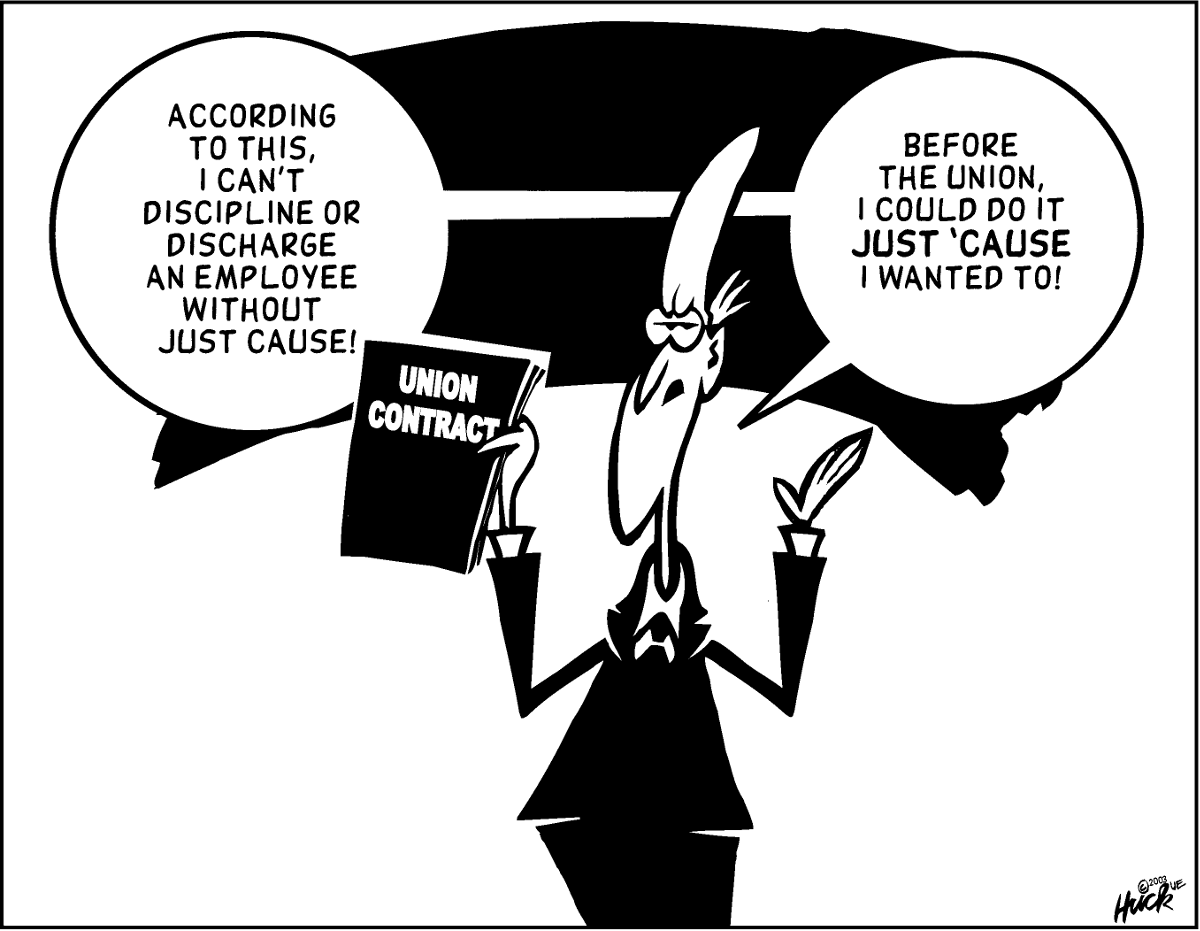One of the strongest arguments in favor of unionization is that it protects you from being unfairly disciplined or fired. Having “just cause” language in your union contract means your employer must demonstrate that any disciplinary action is fair and appropriate. Management has the burden of proof in discipline cases – they must provide evidence that they acted fairly. If ever you feel that is not the case, the union is there to help.
Non-union employees can be disciplined or terminated “without cause.” The employer does not have to prove they had a good reason, or any reason, for doing what they want to do.

The Seven Tests of Just Cause
The seven tests of just cause began in the 1960s, when labor attorneys noticed that most arbitrators considered the same factors when making rulings about the disciplinary cases that came before them. Not every discipline goes to arbitration, and there are no guarantees that an arbitrator will rule in favor of the employee even when a good case is made. But when a union can demonstrate that an employer has failed one or more of the seven tests of just cause, an employer often changes their decision rather than risk losing an arbitration further down the line.
These are the Seven Tests:
- Fair Notice: Did management make the worker aware of the rule or policy which they are being accused of violating?
- Prior Enforcement: Has management recently enforced this rule or policy?
- Due Process: Did management conduct interviews with the accused person before issuing the discipline? Did they list the charges precisely? Did they take action promptly?
- Substantial Proof: Was management’s decision to discipline based on credible and substantial evidence? How strong is their proof?
- Equal Treatment: Is the punishment management is proposing consistent with the punishment other workers received for the same or a very similar offense?
- Progressive Discipline: During the disciplinary process, did Management issue at least one level of discipline that allowed the employee an opportunity to improve?
- Mitigating and Extenuating Circumstances: Did the employer understand the full story when they issued discipline? Did the discipline take into account any mitigating, extenuating or aggravating circumstances?
